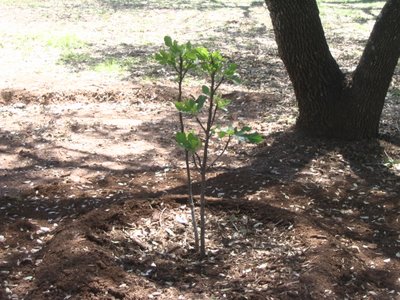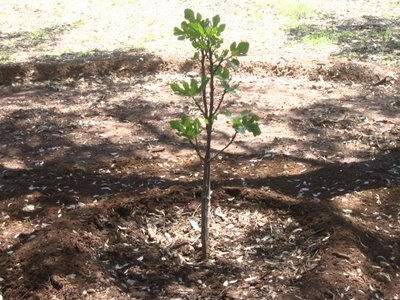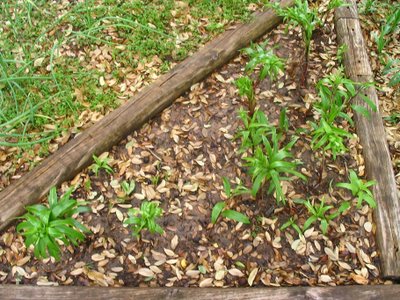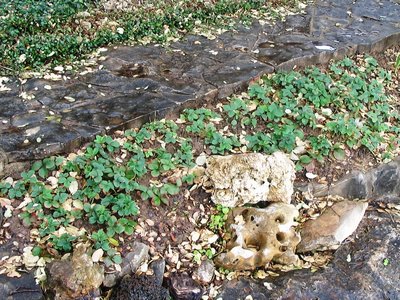Installed Water Line
This morning we spotted two or three blossoms in the very top of the Wisteria Vine. This will be the first year that we have had any blossoms since we planted the vine several years ago.


This section closest to the pole for the bird house is on the southern end of the planter. There soil will be deepest next to the rocks on the east side of the planter.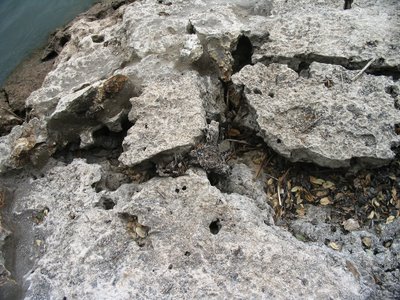
This section is in the center of the planter. There are several areas closest to the rocks where the soil will be very deep.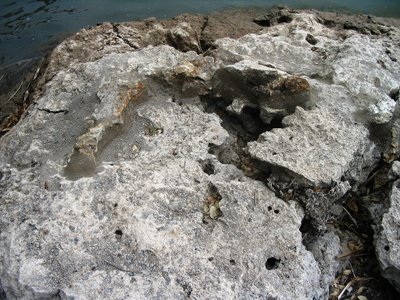
This section is on the northern end of the planter. The soil will be deepest next to the rocks on the east side of the planter.
For Stage II we will fill some of the larger cracks and crevices in the rocks with mortar mix. This will help unify Stage I construction with the existing rock and will help prevent erosion. We will complete the project by willing the planting areas with soil. These photos will serve as a reference showing the dept of the soil.
